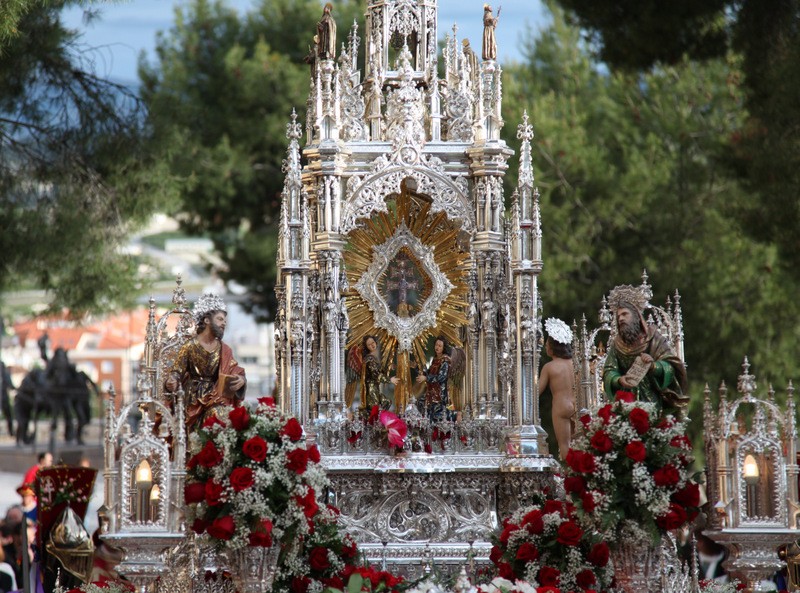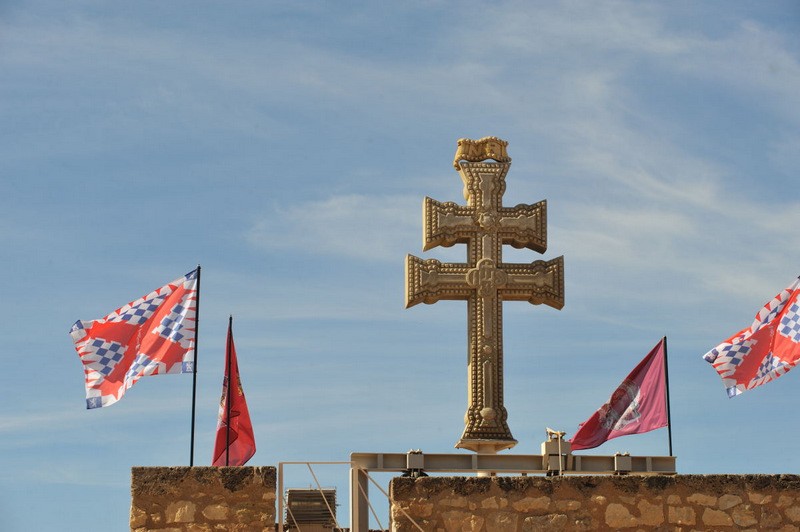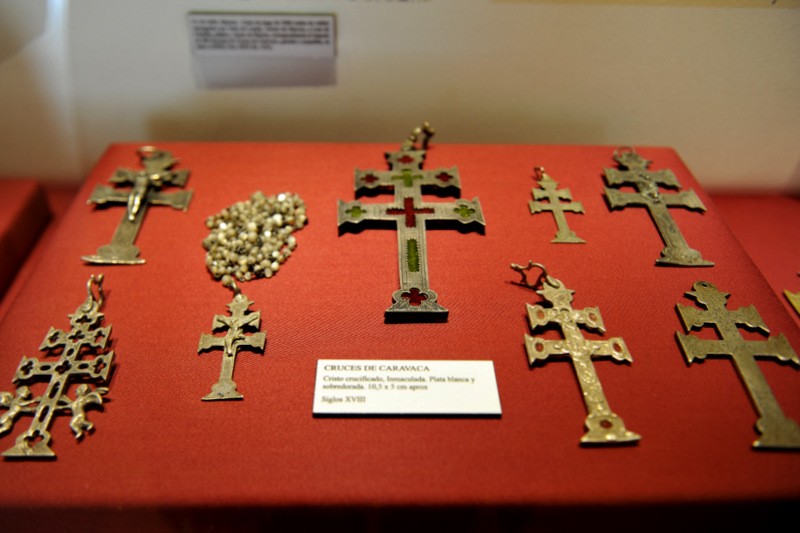

Guidelines for submitting articles to Hacienda Riquelme Golf Resort Today
Hello, and thank you for choosing Hacienda Riquelme Golf Resort.Today to publicise your organisation’s info or event.
Hacienda Riquelme Golf Resort Today is a website set up by Murcia Today specifically for residents of the urbanisation in Southwest Murcia, providing news and information on what’s happening in the local area, which is the largest English-speaking expat area in the Region of Murcia.
When submitting text to be included on Hacienda Riquelme Golf Resort Today, please abide by the following guidelines so we can upload your article as swiftly as possible:
Send an email to editor@spaintodayonline.com or contact@murciatoday.com
Attach the information in a Word Document or Google Doc
Include all relevant points, including:
Who is the organisation running the event?
Where is it happening?
When?
How much does it cost?
Is it necessary to book beforehand, or can people just show up on the day?
…but try not to exceed 300 words
Also attach a photo to illustrate your article, no more than 100kb

The Vera Cruz, the True Cross of Caravaca de la Cruz
The holy relic of Caravaca has defined the history and development of the city
 The Cross of Caravaca represents many things to many people and since the Middle Ages it has come to define the nature of the city in which it appeared and is kept. For some it is a memento brought from the Middle East during the Crusades, for others it is a religious treasure which was guarded first by the Order of the Templars and then by the Order of Santiago, and there are those for whom it is the result of a miracle which occurred when south-eastern Spain was still ruled by the Moors.
The Cross of Caravaca represents many things to many people and since the Middle Ages it has come to define the nature of the city in which it appeared and is kept. For some it is a memento brought from the Middle East during the Crusades, for others it is a religious treasure which was guarded first by the Order of the Templars and then by the Order of Santiago, and there are those for whom it is the result of a miracle which occurred when south-eastern Spain was still ruled by the Moors.
Whatever the truth behind the Cross, though, the True and Holy Cross of Caravaca remains a powerful attraction in the 21st century, as is witnessed by the thousands of pilgrims who take part in the Holy Jubilee to venerate the relic and obtain plenary indulgence every seven years.
The Cross of Caravaca and its reliquary
The Cross of Caravaca is a “lignum crucis”, a piece of wood which comes from the cross on which Jesus was crucified. Its appearance is not spectacular, and to a certain degree not important, as it is its origin that is significant to Christians. It has been recognized as genuine by the Catholic Church for centuries, and in 1794 it received the status of “latria” (being worthy of worship).
However, the reliquary in which the fragment is kept is quite another matter. This is a patriarchal cross consisting of one vertical bar measuring 17 centimetres and two horizontal crossbars, with widths of 7 and 10 centimetres, and its origins lie in the Middle East. This style of cross was used by patriarchs as a symbol of greater importance for certain dioceses.
Tradition has it that the cross belonged to Robert of Jerusalem, who took part in the First Crusade in 1099, when it was captured from the Muslims, and that it was brought west in 1230 after Emperor Frederick II visited one of Robert’s successors. Two years later, it was in Caravaca.

The legend of the Holy Cross of Caravaca
Many mysteries surround the cross, but all talk of its appearance in the castle of Caravaca on 3rd May 1232 (or 1231 according to some versions), when Caravaca and the rest of Murcia were still under Moorish rule and thousands of Christians were taken prisoner and imprisoned by the ruler of Valencia, Abu Zeit.
Among them was a priest named Ginés Pérez de Chirinos, whose profession and religious beliefs provoked the curiosity of the Abu Zeit, who questioned him about his religion and what he believed.
Abu Zeit ordered him to perform Mass so that he could see for himself what this entailed, but during the ceremony Pérez Chirinos realized that he was unable to complete the Mass without there being a crucifix present on the altar. Legend has it that at that moment the chamber was flooded with a brilliant light and two angels appeared, bearing a 2-armed cross, the Vera Cruz of Caravaca, containing the lignum crucis, wood from the true cross of Jesus Christ.
Overcome by the vision, Abu Zeit fell to his knees and converted to the Christian faith, and news of the Vera Cruz spread as it gained a reputation as a powerful protector and healer in the centuries to come.
This event led to the cross becoming known as the “True Cross”, and it was subsequently incorporated into Caravaca’s coat of arms.
(Another rather more prosaic version is that the Cross was brought here from the Holy Land by the Knights Templar and protected by them until their order was disbanded by Pope Clement V in 1312. However, the warrior knights are not believed to have been in the area until 1241.)
Over the centuries the identity of Caravaca became inextricably intertwined with the Cross, and as the city grew it welcomed numerous religious orders: hence the proliferation of old churches, monasteries and convents in the city today.
However, the legend took on new twists in the 20th century.
On the night of the 13th/14th February 1934, the Cross disappeared from its sanctuary, and as the word spread a terrified mob gathered in the street, panicking that their protector had been lost. The chaplain was seized and dragged out to the street, with accusations of being involved in the theft ringing in his ears. Although he denied all knowledge of the disappearance he was executed in broad daylight with a single pistol shot from the impassioned townspeople.
Rumours abounded over what could have happened: some believed it had been taken for its own protection by the Knights Templar, others that it had been taken to Rome for safety in the face of the impending Civil War in Spain, and others maintain that it is still hidden somewhere in Caravaca.
The Civil War passed and still there was no sign of the cross, but following discussions with the Vatican, Pope Pius XII decided to give the town two splinters from another section of the cross of Jesus, a treasure guarded for centuries within the walls of the Vatican. These were given in 1942, and in 2006, to celebrate the 775th anniversary of the appearance of the cross, 200 pilgrims travelled from Caravaca to the Holy Land and were given a third splinter of the true cross.
The reliquary holding the cross was re-fashioned based on the original design,

The angels who brought the Cross to Caravaca
It is significant that there are angels present in the legend of the appearance of the Cross in Caravaca, as this lends the story greater prestige in the eyes of the Catholic faith: in the Middle Ages, when there was an abundance of holy relics, some were made more credible than others by a style of reliquary in which relics were kept inside a cross-shaped case carried by angels.
This shape was brought to western Europe from the Byzantine Empire in the east, and the format can be seen in the Cathedral of Naples, in Saint Mark’s in Venice and in the Abbey of Scheyern in Germany.
The large outer case in which the small reliquary in Caravaca is housed was donated by Suárez de Figueroa in the 15th century.
The Cross of Caravaca and Military Orders
The dates in which the Knights Templar were in Caravaca are not exactly certain, but historians generally agree that their presence lasted from around 1266 to 1312 and that from their base here they controlled a large area of land through a network of castles. At this time the Order was close to being dismantled in western Europe, but there developed a close association between their activities and the existence of the Cross in Caravaca.
A generation after the Templars left the region of Murcia, King Alfonso XI granted power over Caravaca to the Order of Santiago, and the city remained under the control of this Order for most of the following 550 years. Caravaca and its Cross thus became inseparable from the Order, which was responsible for the rituals which grew around the relic and for the emblematic “cross of Santiago” appearing on all of the major buildings in the city.
Church recognition of the Cross of Caravaca
The validity of the lignum crucis in Caravaca was recognized by the Catholic Church soon after the relic appeared, as is shown on numerous documents housed in the Basilica-Sanctuary, including a bull issued by Clement VII during the Avignon Papacy in 1392. Like many other Popes, he granted indulgence to pilgrims who paid homage to the Cross, and among those who followed in his footsteps were his namesake Clement VIII in 1597, Paul V (1606), Alexander VIII (1690) and Clement XI (1705). In 1736 the status of “Latria” (an item worthy of worship) was granted during the papacy of Clement XII.
The name of “Vera Cruz” which is given to the relic in these documents is one which gradually became more and more closely associated with the cross of Caravaca, and the adjective was not used lightly by the Church. The prestige is known to have rubbed off on the city as early as 1285, when a document in the Cathedral of Murcia describes the town’s coat of arms as featuring a cross and a cow, a design which exists to this day.

The fame of the Cross spreads
Almost as soon as Caravaca was relieved of the precarious situation of being practically on the border with the Muslim kingdom of Al-Andalus by the conquest of Granada in 1492, the fame of the Cross spread rapidly throughout Europe. Among the religious orders to establish themselves here were those led by Santa Teresa de Jesús and San Juan de la Cruz: the latter visited Caravaca no fewer than seven occasions, and founded the Convento del Carmen in 1586.
Word of the Cross brought noble families to Caravaca, as can still be seen in the architecture of the city, while missionary priests spread it across the Empire to South America and to the rest of Europe as they visited other establishments belonging to their Orders.
The business of pilgrimage and worship grew in importance, and while special Jubilees were held to attract more visitors new rituals were inaugurated and the Sanctuary (now a Basilica) was built.
Crosses of Caravaca as gifts
The tradition of giving likenesses of the Vera Cruz de Caravaca as gifts dates back at least as far as the 16th century, when it is known that one such image was presented by the Carmelite nuns to Santa Teresa: this is now housed in the convent of the Barefoot Carmelites in Brussels. The Saint herself notes receipt of the present in 1576, and the prior existence of the custom cannot be discounted.
The significance of the gifting of a Cross of Caravaca is that it embodies affection, peace and love.
This tradition is one of the reasons for the existence of so many likenesses of the Cross of Caravaca, and there is a collection of them on display in the Museo de la Cruz.

Rituals of the Cross
The rituals which surround the worship and commemoration of the Cross of Caravaca took on their current format in the late 19th and early 20th centuries, and are now a central part of the annual fiestas which also include the racing of the Wine Horses.
In chronological order, the nine rituals which are observed every year in early May are the following:
- Holy Mass to commemorate the appearance of the Cross.
- The Blessing of the Wine and first Bathing of the Cross.
- The Blessing of the Flowers (together with the blessing of the wine).
- The Procession of the Cross as it leaves its Sanctuary.
- Holy Mass to celebrate the finding of the Cross.
- The Procession to the Templete prior to the blessing of the waters.
- The Bathing of the Cross.
- The Cruz de Impedidos, a procession through the streets in which the Cross is taken to those who most need it but cannot visit the Sanctuary.
- The Procession in which the Cross is returned to its Sanctuary, followed by a blessing of the fields and of Nature.
Further information about Caravaca is available from the tourist office (Plaza de España, 7, telephone 968 702424, email turismo@caravacadelacruz.es).
Or for more local information, including the Holy Jubilee Year as well as local news and what’s on, go to the home page of Caravaca Today.
